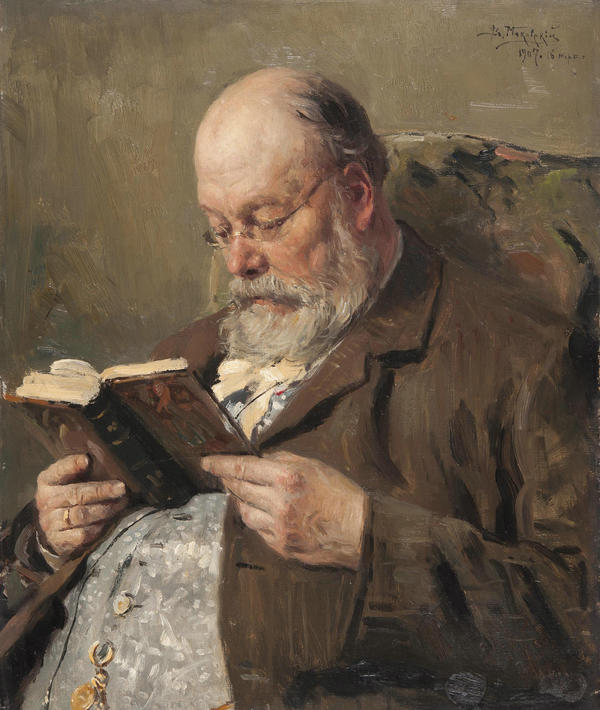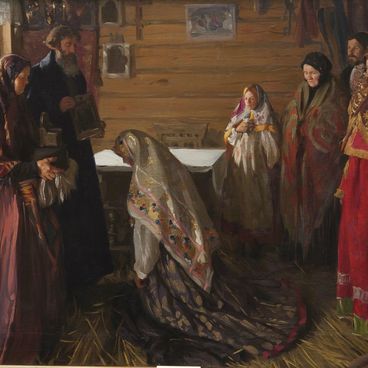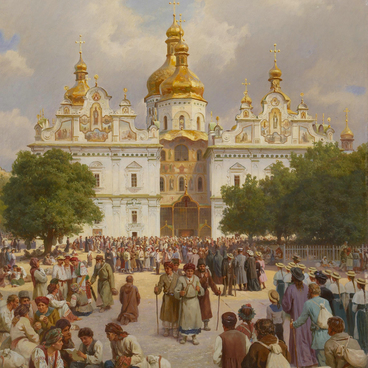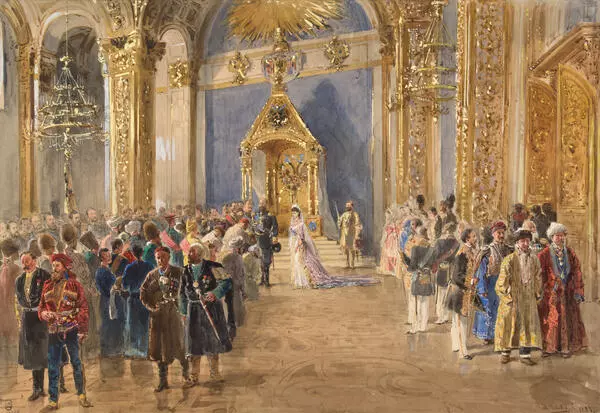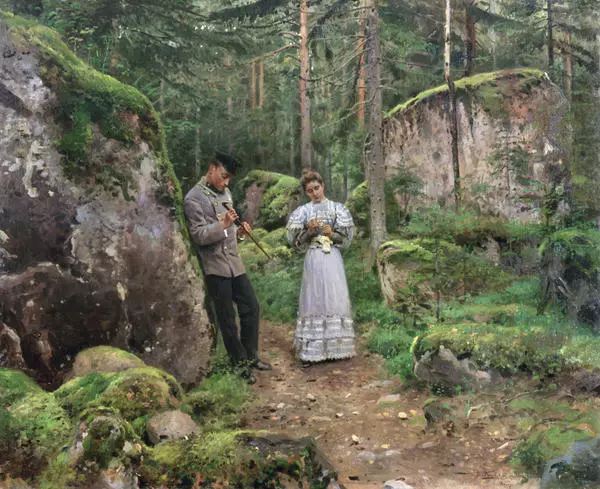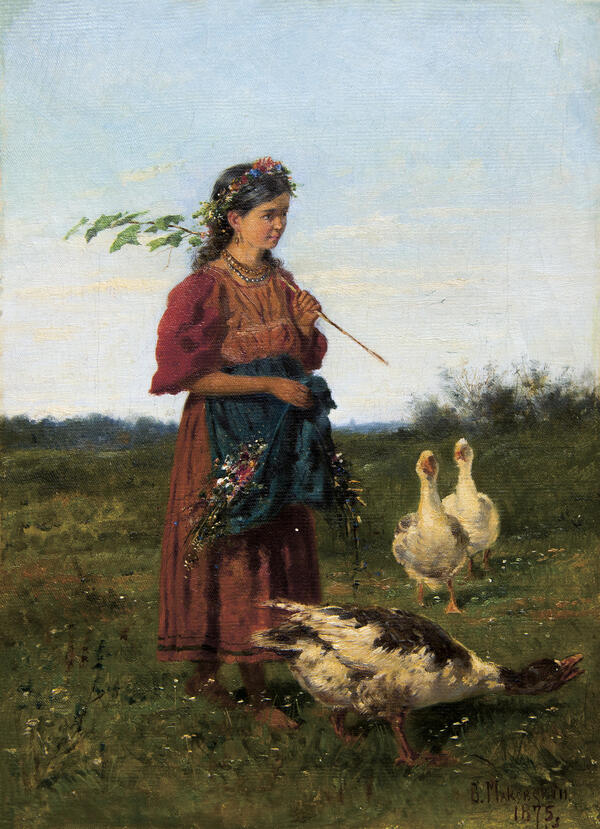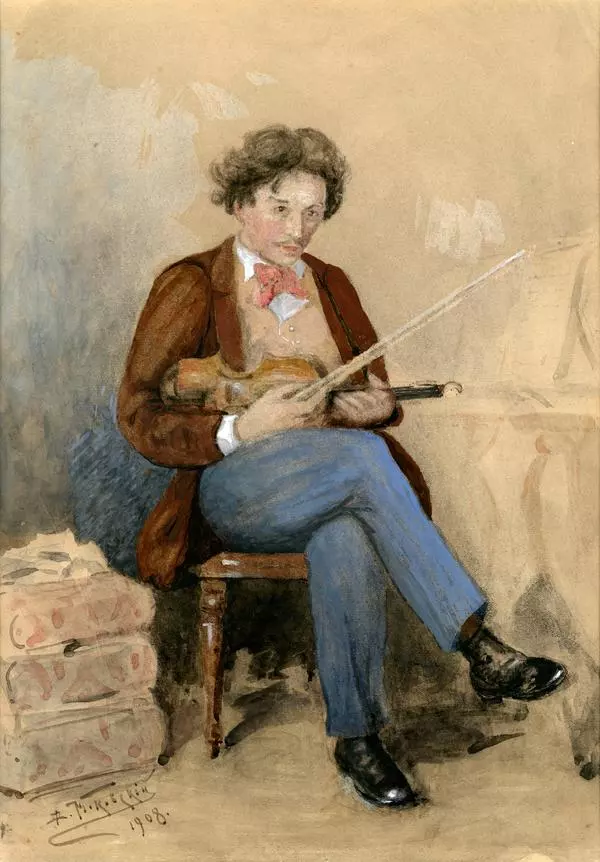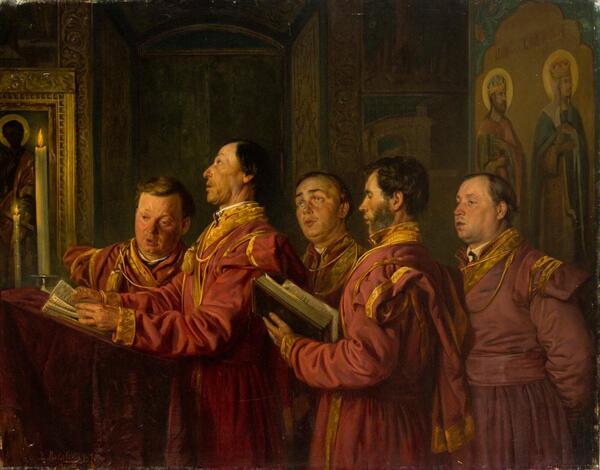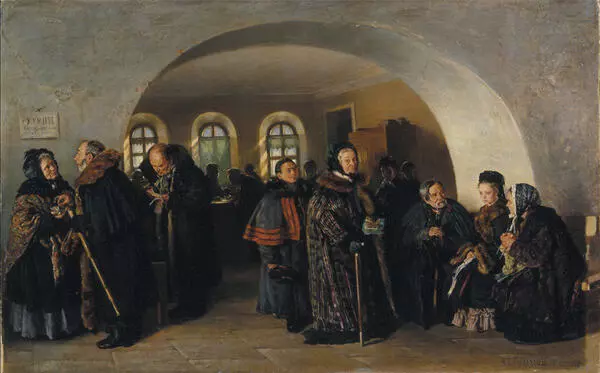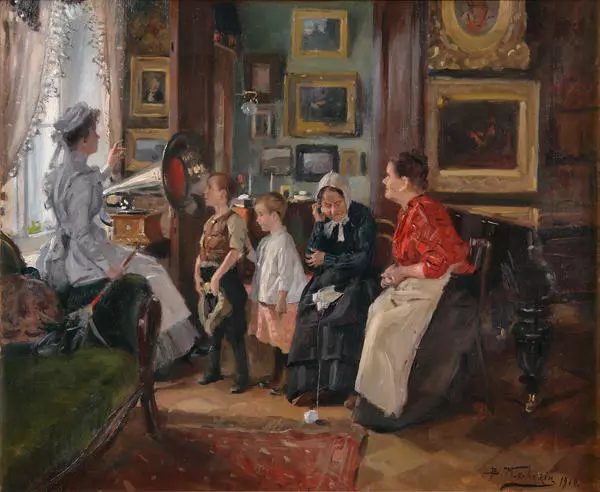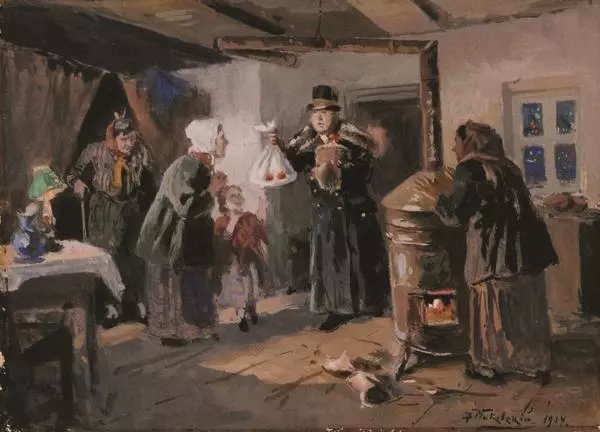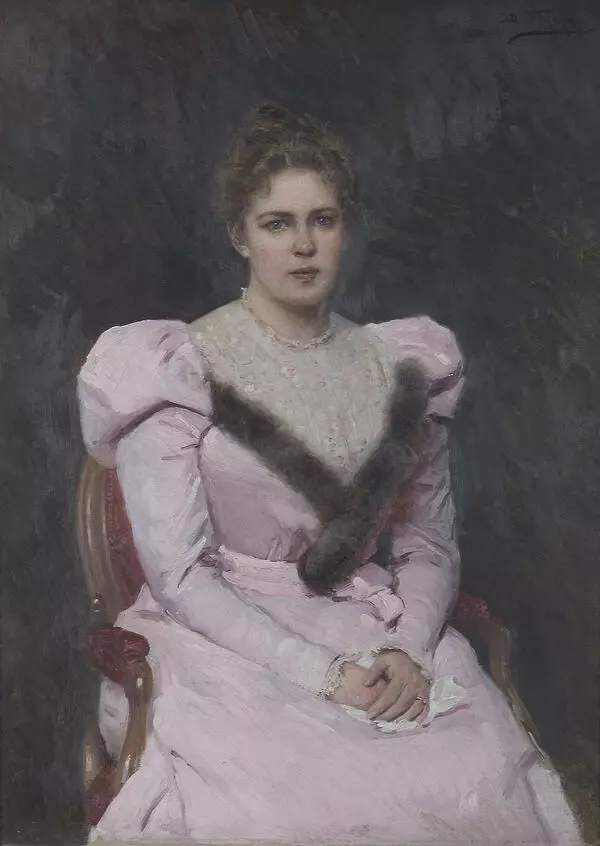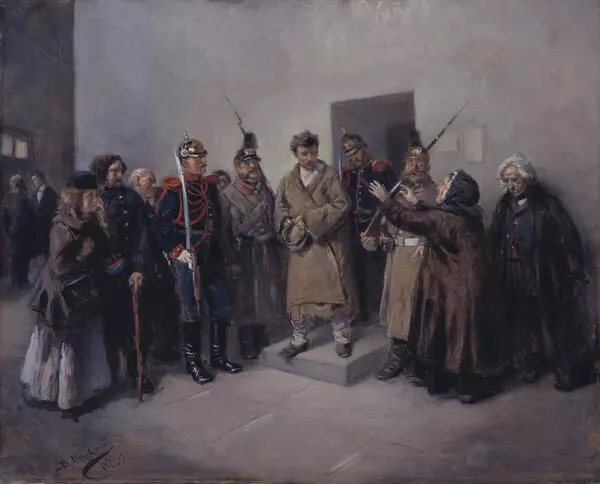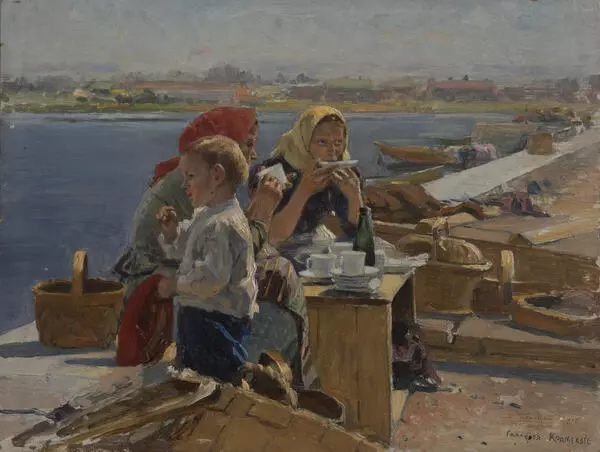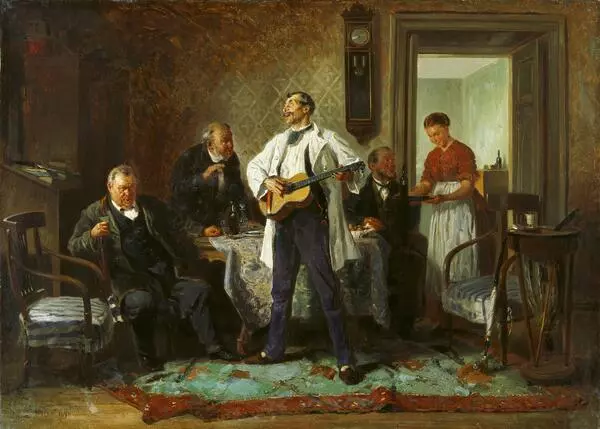The exhibited painting depicts Academician Ivan Yanzhul reading a book. This work is strikingly different from most traditional portraits. Generally, sitters were painted in their best outfits, posing in proud and grand postures. However, Yanzhul in this portrait is dressed in rather simple clothes, sits in a comfortable posture in his favorite armchair and does not even look at the viewer. Vladimir Makovsky, the author of the picture, opted for this unusual approach for his work, in order to show the academician the way he was in real life, and to lend a special charm to the painting.
Academician Ivan Yanzhul was born in a noble family of modest means. When he was just admitted to college, his parents died of typhoid fever, and Yanzhul with his sisters were left penniless. Yanzhul worked hard to settle the girls, and the determination he acquired fighting with difficulties allowed him to make impressive achievements in science, mentorship and literature afterwards. His works in economics, international relations, customs policies and factory laws remain relevant to date. Yanzhul’s textbook on financial law was even republished in the series Golden Pages of Russia’s Financial Law in 2006.
For a long time, Yanzhul was a lecturer at Moscow University, but after the title of member of the St. Petersburg Academy of Sciences was conferred on him, he moved to St. Petersburg. That was the beginning of the quietest period of his life.
In that time, Yanzhul met with Makovsky. The artist and the scholar belonged to the same generation, they shared similar views, so it was not difficult for them to find common ground. The displayed portrait was painted at the peak of both men’s careers: In 1907, Yanzhul had been promoted to professorship, and Makovsky was the president of the Academy of Arts.
Vladimir Makovsky studied painting from Vasily Tropinin, was an active member of the Society for Travelling Art Exhibitions. Fyodor Dostoevsky wrote about his pictures: “[…] if we”ve got something to be proud of, to show off something, then, of course, it should be something from our genre […] in these small pictures, I believe, there is even love for humanity, not only Russian in particular, but even humanity in general.”
Academician Ivan Yanzhul was born in a noble family of modest means. When he was just admitted to college, his parents died of typhoid fever, and Yanzhul with his sisters were left penniless. Yanzhul worked hard to settle the girls, and the determination he acquired fighting with difficulties allowed him to make impressive achievements in science, mentorship and literature afterwards. His works in economics, international relations, customs policies and factory laws remain relevant to date. Yanzhul’s textbook on financial law was even republished in the series Golden Pages of Russia’s Financial Law in 2006.
For a long time, Yanzhul was a lecturer at Moscow University, but after the title of member of the St. Petersburg Academy of Sciences was conferred on him, he moved to St. Petersburg. That was the beginning of the quietest period of his life.
In that time, Yanzhul met with Makovsky. The artist and the scholar belonged to the same generation, they shared similar views, so it was not difficult for them to find common ground. The displayed portrait was painted at the peak of both men’s careers: In 1907, Yanzhul had been promoted to professorship, and Makovsky was the president of the Academy of Arts.
Vladimir Makovsky studied painting from Vasily Tropinin, was an active member of the Society for Travelling Art Exhibitions. Fyodor Dostoevsky wrote about his pictures: “[…] if we”ve got something to be proud of, to show off something, then, of course, it should be something from our genre […] in these small pictures, I believe, there is even love for humanity, not only Russian in particular, but even humanity in general.”


